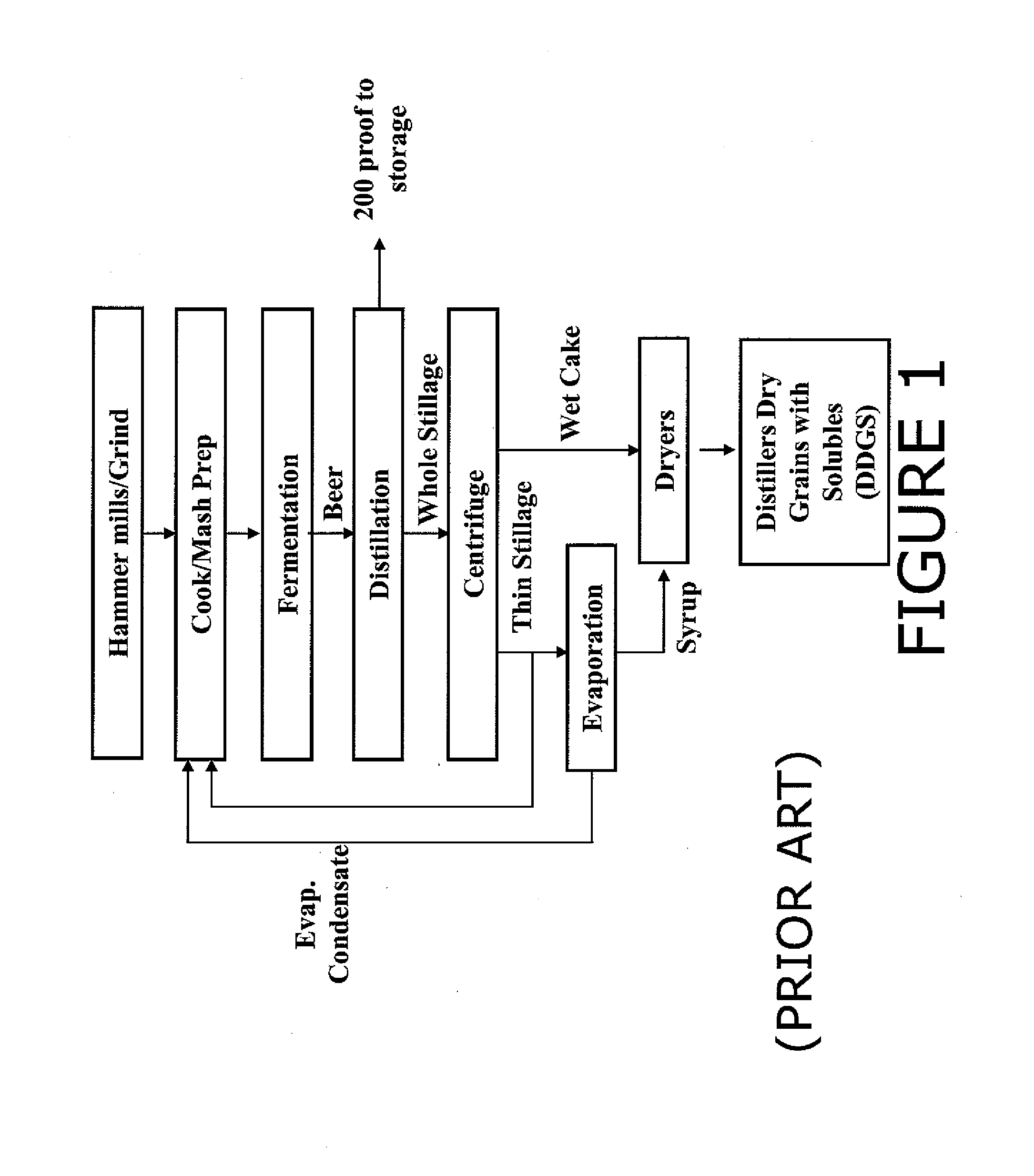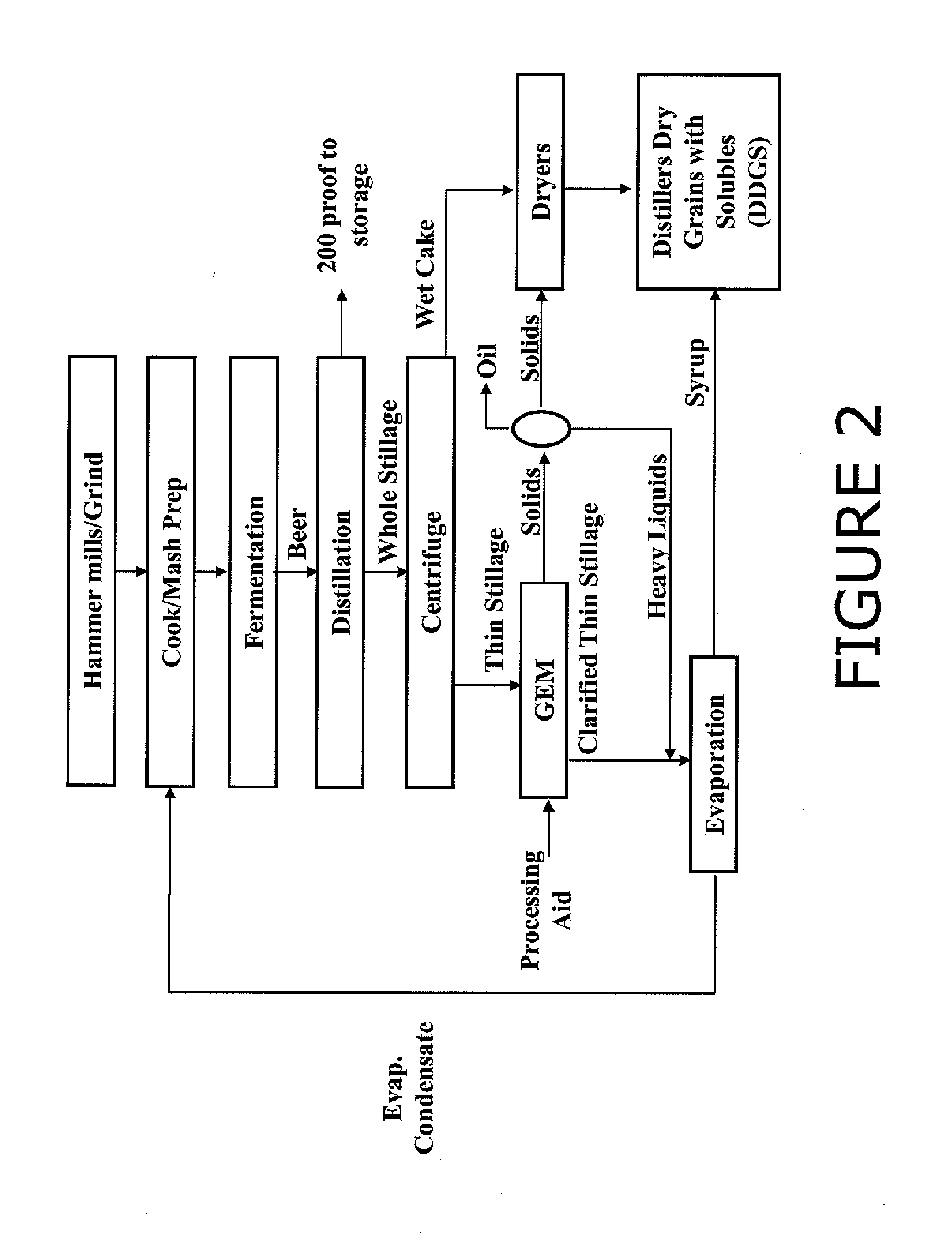Method for conditioning and processing whole or thin stillage to aid in the separation of and recover protien and oil fractions
a stillage and process technology, applied in the field of system and method for conditioning a dry milling stillage process stream, can solve the problems of significant energy, cost, mechanical separation effort, energy required for each separation step, etc., and achieve the effect of reducing the energy needed for stillage processing
- Summary
- Abstract
- Description
- Claims
- Application Information
AI Technical Summary
Benefits of technology
Problems solved by technology
Method used
Image
Examples
examples
[0063]The foregoing may be better understood by reference to the following example, which is presented for purposes of illustration and is not intended to limit the scope of the invention.
[0064]A number of 40 ml samples of thin stillage were prepared for treatment under different conditions in 50 ml centrifube tubes. Sample category A was a control having no additive. Category B had 0.5 ml of an anionic flocculant (GR-109 by Nalco Company, Naperville, Ill.) added to it. Category C had 1 ml of anionic flocculant added to it. Each sample was subjected to various temperatures and pressures and was then placed in a centrifuge where it was spun for 30 minutes in a vessel at 4,400 rpm. The following describes the treatments the various samples were subjected to and the results of the treatment.
TABLE 1OilOilOilEmulsionEmulsionEmulsionLayerLayerLayerTemperaturePressure(ml)(ml)(ml)(ml)(ml)(ml)(° F.)(psi)Sample ASample BSample CSample ASample BSample C700333000212039900.50.52202.52.513130.50....
PUM
| Property | Measurement | Unit |
|---|---|---|
| period of time | aaaaa | aaaaa |
| period of time | aaaaa | aaaaa |
| viscosities | aaaaa | aaaaa |
Abstract
Description
Claims
Application Information
 Login to View More
Login to View More - R&D
- Intellectual Property
- Life Sciences
- Materials
- Tech Scout
- Unparalleled Data Quality
- Higher Quality Content
- 60% Fewer Hallucinations
Browse by: Latest US Patents, China's latest patents, Technical Efficacy Thesaurus, Application Domain, Technology Topic, Popular Technical Reports.
© 2025 PatSnap. All rights reserved.Legal|Privacy policy|Modern Slavery Act Transparency Statement|Sitemap|About US| Contact US: help@patsnap.com



